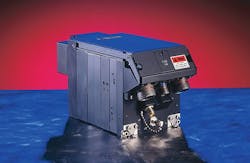Navy orders additional AN/ARC-210 SATCOM airborne radios for U.S. and allied aircraft
Officials of the Naval Air Systems Command (NAVAIR) at Patuxent River Naval Air Station, Md., are asking Rockwell Collins in Cedar Rapids, Iowa, to provide additional AN/ARC-210 aircraft radios for U.S. and foreign aircraft.
The indefinite-delivery/indefinite-quantity contract modification is for additional AN/ARC-210 radios and ancillary equipment for domestic and Foreign Military Sales platforms, Navy officials say.
The AN/ARC-210 Gen V programmable digital aircraft radio from Rockwell Collins (NYSE:COL) provides two-way, multi-mode voice and data communications over frequencies from 30 to 512 MHz, covering UHF and VHF bands with AM, FM, and SATCOM capabilities.
Related: Exelis to provide SINCGARS aviation radios to link helicopters with infantry units
The ARC-210 radio also includes embedded anti-jam waveforms, including Have Quick and SINCGARS, and other data link and secure communications features for battlefield interoperability and transfer of data, voice, and imagery. The radios communicate with other avionics over a MIL-STD-1553 data bus.
This contract modification exercises an option on a potential $101.1 million contract awarded to Rockwell Collins in October 2014 for as many as 1,160 AN/ARC-210 radios for U.S. and foreign military sales aircraft.
The ARC-210 aircraft radio provides VHF close air support radio communications on 30-88 MHz frequencies; navigation on 108-118 MHz; air traffic control on 118-137 MHz; land mobile communications on 137-156 MHz; and maritime communications on 156-174 MHz.
The radios also provide aircraft with UHF military and homeland defense communications on 225-512 MHz frequencies; and public-safety communications on 806-824, 851-869, 869-902, and 935-941 frequencies.
Related: Control and data-link radios for unmanned vehicles pushing the limits of SWaP
The AN/ARC-210 Gen V programmable digital communication system conforms to software-defined radio (SDR) tenets and architectures, and transfers networked or point-to-point data, voice, and imagery.
Rockwell Collins engineers also have added a connector in the back of the radio to allow an Ethernet input for network-centric warfare. Rockwell Collins has supplied more than 30,000 AN/ARC-210 radios worldwide on over 180 different kinds of aircraft for multiband, multimode communications.
The ARC-210 also provides embedded, programmable information security per the U.S. National Security Agency (NSA) Cryptographic Modernization Initiative.
On this contract modification, Rockwell Collins will do the work in Cedar Rapids, Iowa, and should be finished by September 2018. For more information contact Rockwell Collins online at www.rockwellcollins.com, or Naval Air Systems Command at www.navair.navy.mil.
Learn more: search the Aerospace & Defense Buyer's Guide
